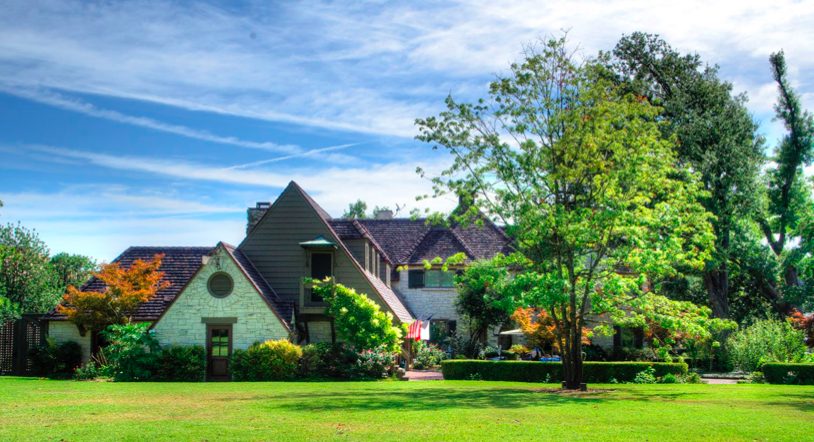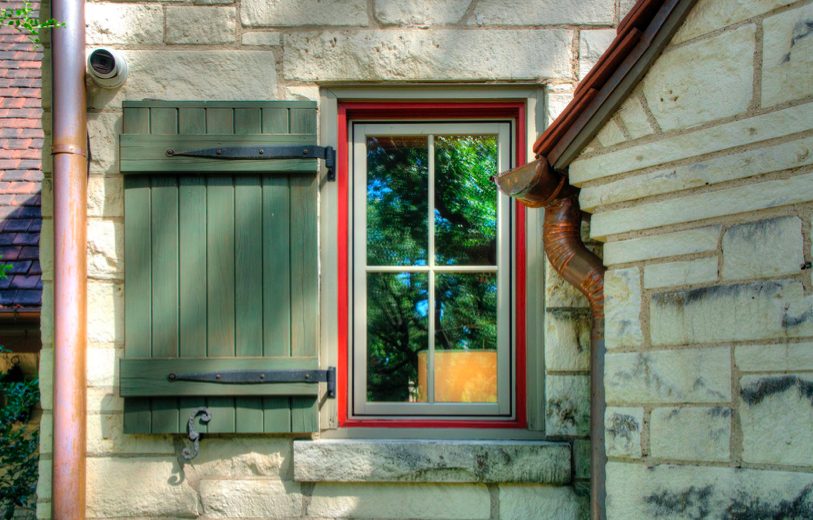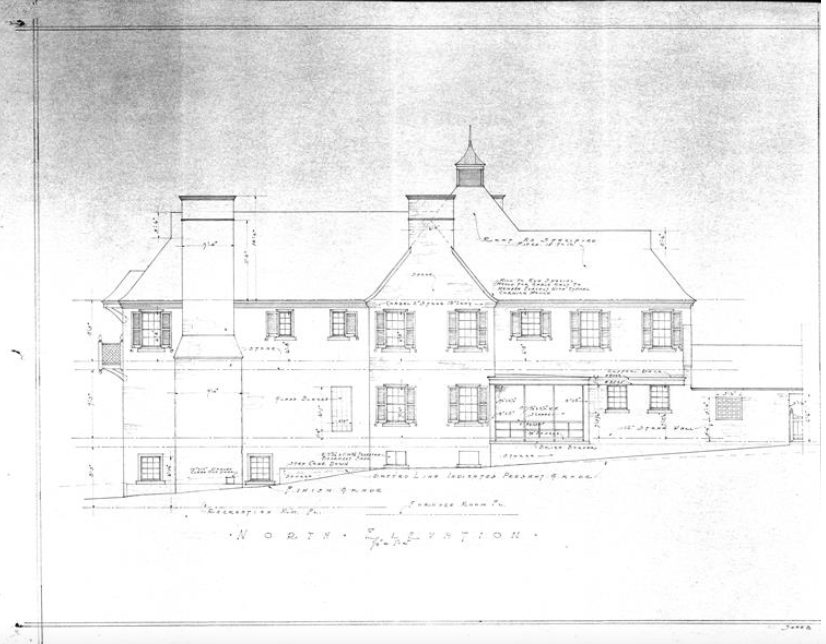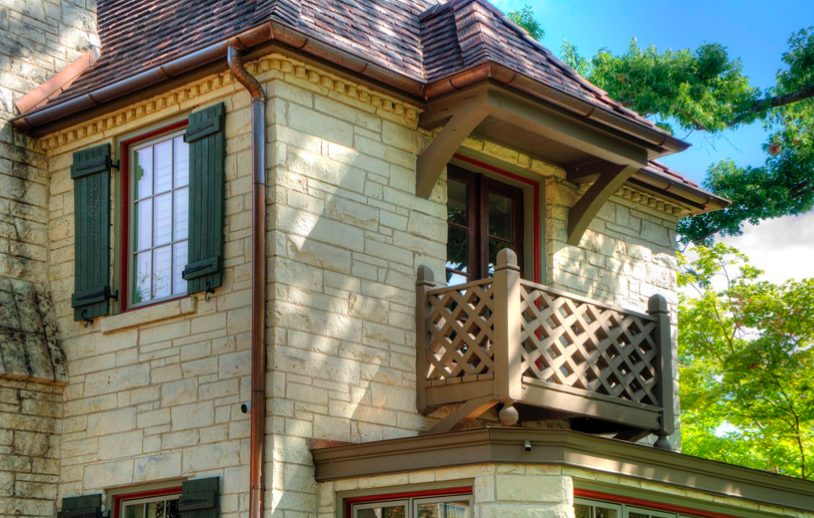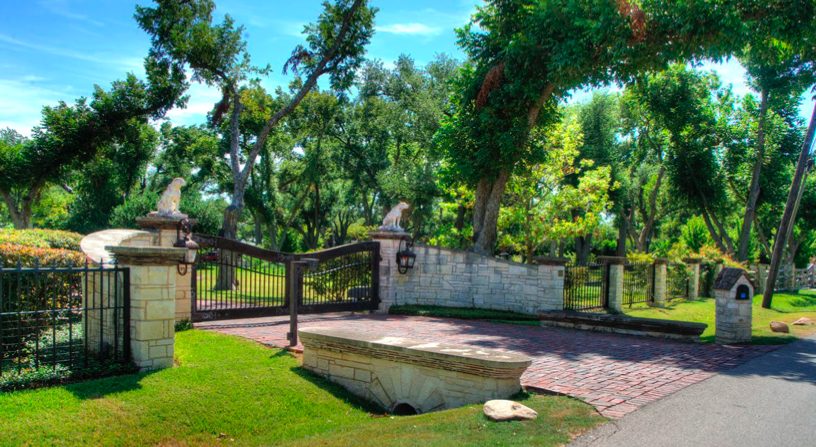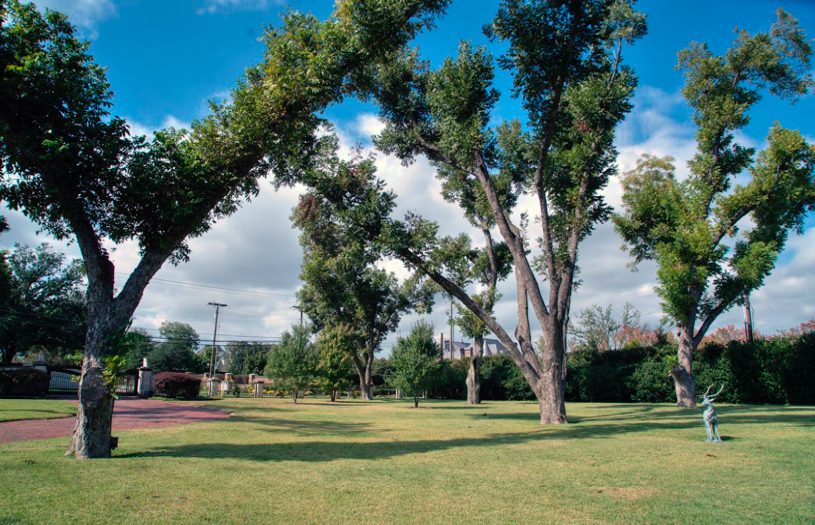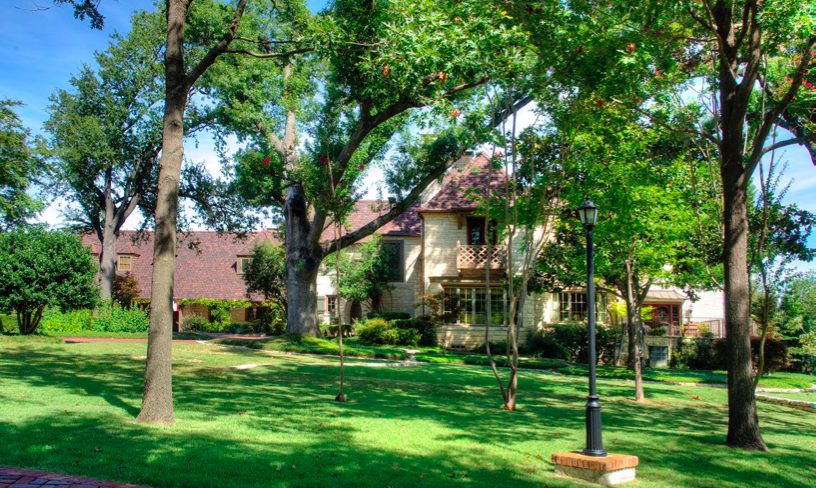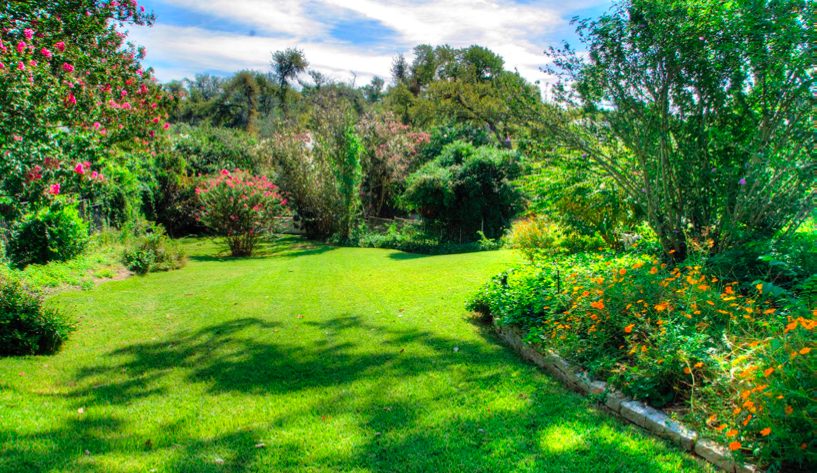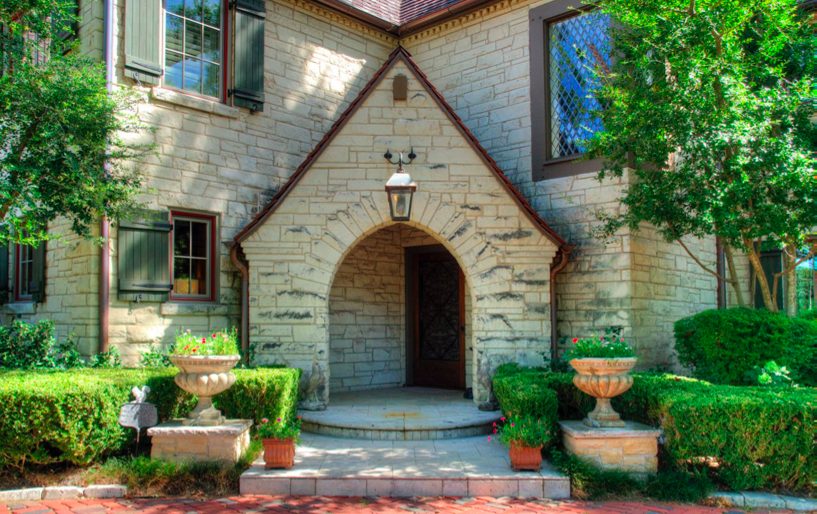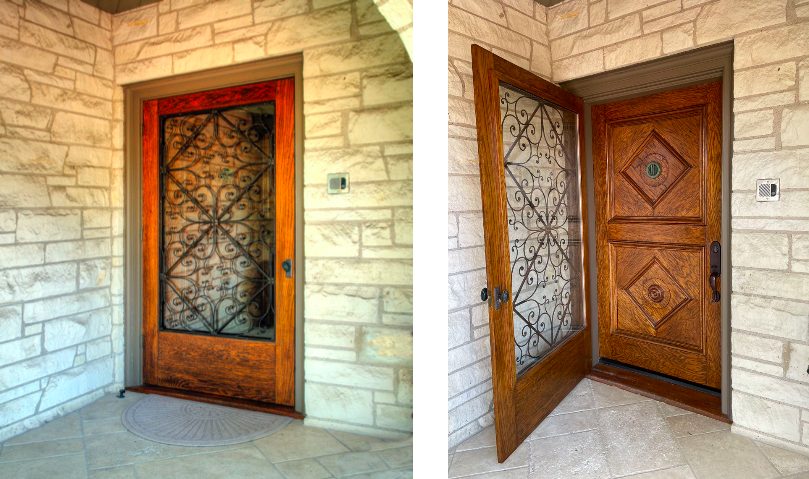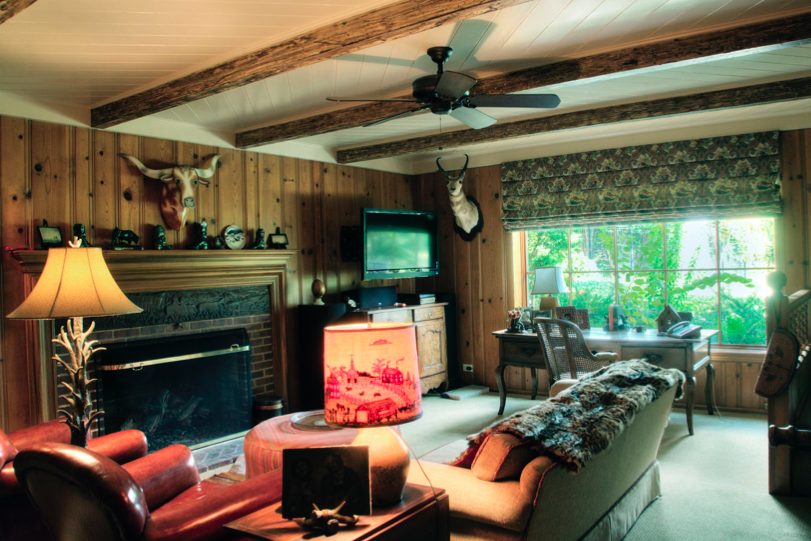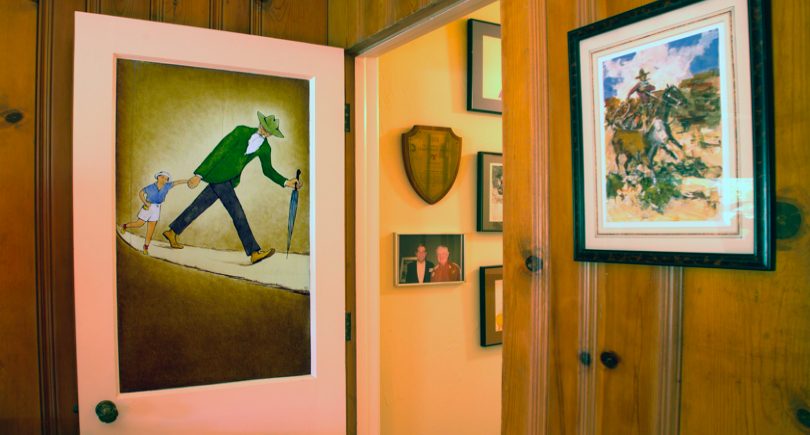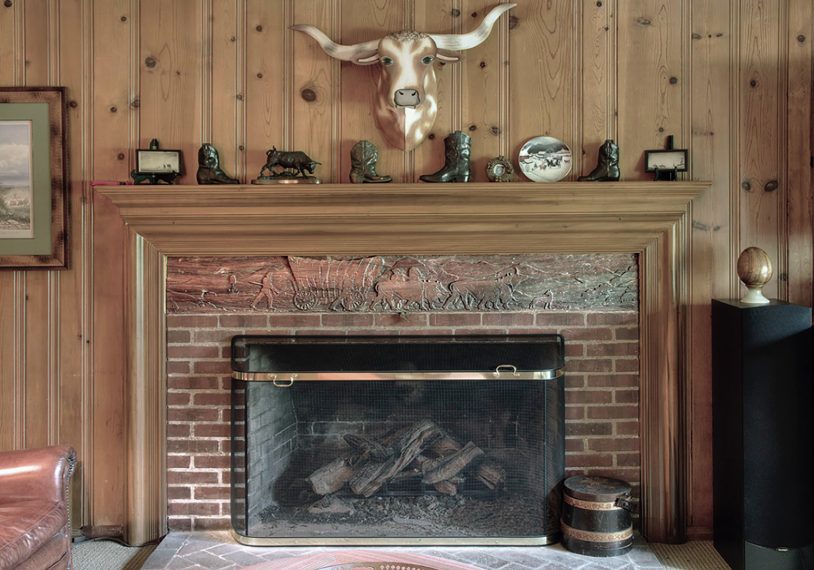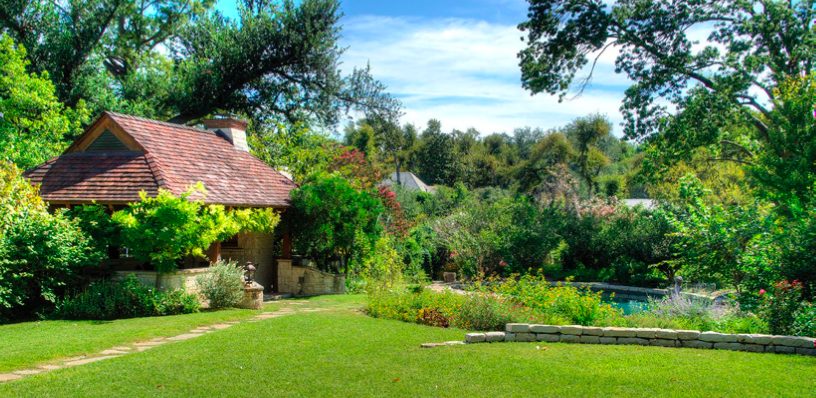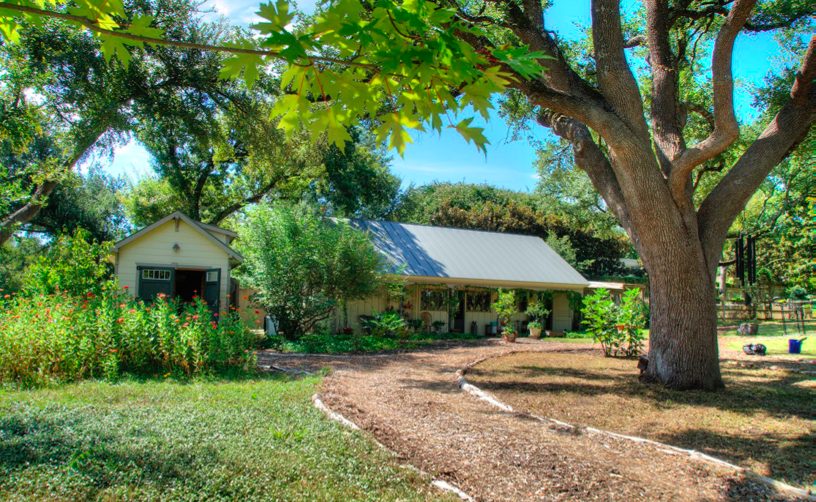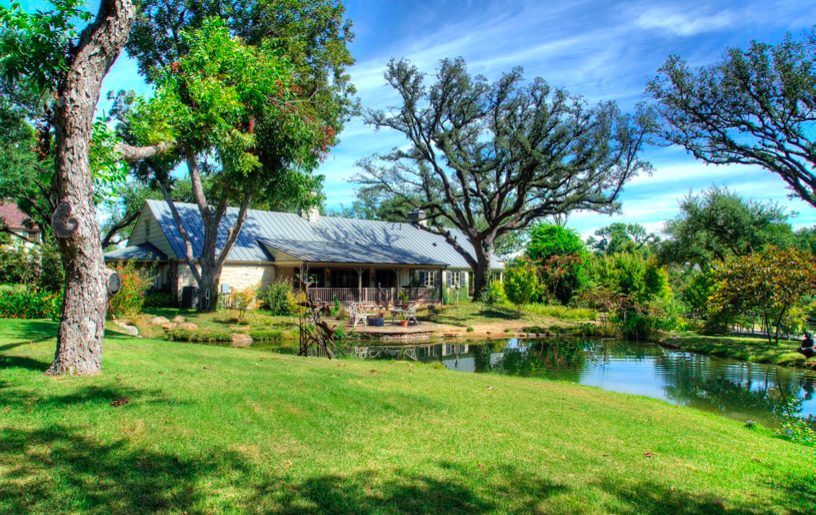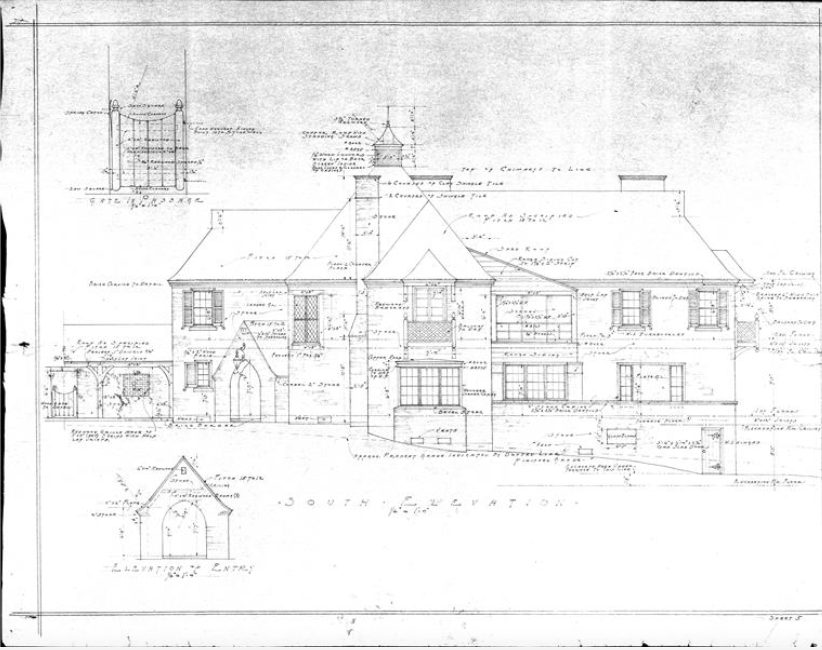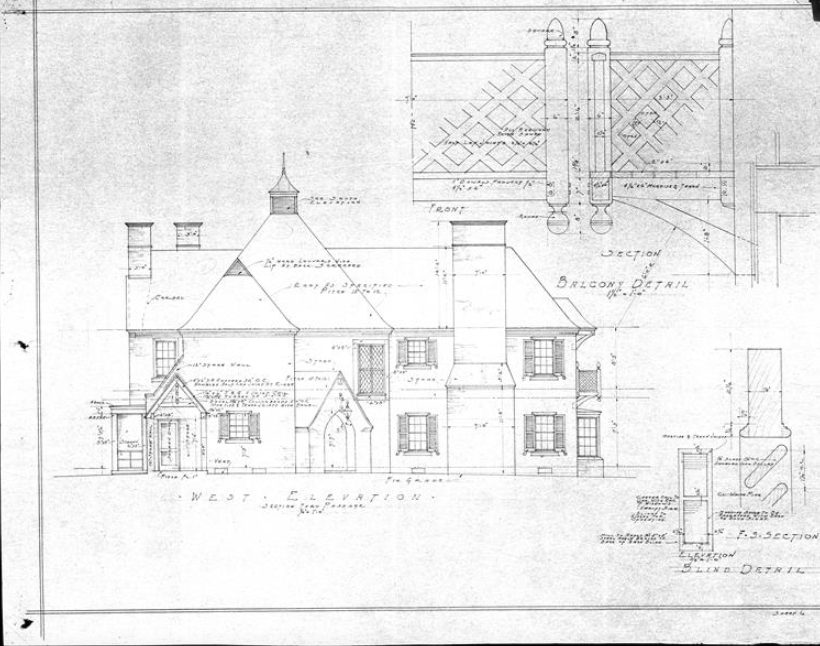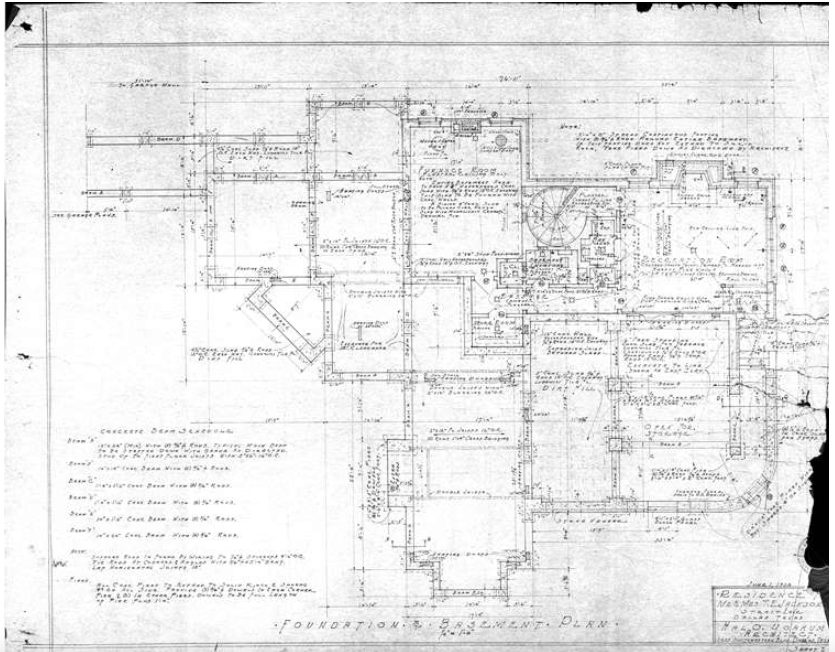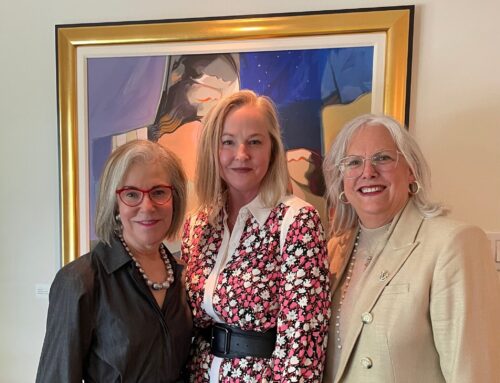The owner of an 83-year-old home on Strait Lane recently nominated the estate for historic landmark designation from the City of Dallas.
The Jackson residence at 10260 Strait Lane was built in 1939 and is one of the last remaining historic houses on the street, according to the nomination, submitted by Nancy McCoy of McCoy Collaborative Preservation Architecture, LLC.
Preservation Dallas presented the nomination to the City’s Landmark Commission recently.
Architect Hal O. Yoakam designed the house, and it’s an example of the American Country House movement.
The home was built for Thomas Elbert Jackson, a powerful Dallas citizen, and his wife, Virginia.
He was born in Illinois in 1881 and married Virginia Fell in Nebraska. They moved to Dallas from Kansas City, Missouri, in 1907.
By 1910, Jackson was a manager of the Pittsburgh Plate Glass Co., and the Jacksons rented a house on Pennsylvania Avenue in South Dallas, according to the nomination.
They later lived in Highland Park before building their Strait Lane estate.
Jackson was manager of the glass company for 62 years and retired in 1956.
But he was also a civic leader with influence on Dallas’ early development. He was director of Fair Park from 1929-1931, when the Cotton Bowl was built. He was director of the Dallas Chamber of Commerce for 25 years, during the time of land acquisition for and development of Love Field.
He served as president of the Dallas Citizens Council, and in 1947, he was the first president of the Greater Dallas Planning Council.
The Jacksons sold their estate in 1958 and moved into a high-rise, 3525 Turtle Creek, where they lived until their deaths in the mid-1970s, the nomination states.
Historic maps show that Strait Lane didn’t exist in 1930, although the area contained “a scattering of large estates.”
Here’s how the nomination summarizes the history of Dallas’ most exclusive street.
Prior to the Jackson residence, the land was settled as part of Peters Colony in the mid-1800s. By 1880, three units of the Strait family of Kentucky had settled as farmers on the land. In the 1900 Sam Street’s Map of Dallas County shows three houses on land owned by M.F. Fortner. The Strait family is shown to reside in three houses on that land. Thus, it is surmised that the Strait family is the namesake for the Strait Lane, which was not established until the 1930s. It is not known how long the family remained on the property, but it may have been this land that the Jacksons purchased. As late as 1930, the land in this area remains farmland and undeveloped except for a scattering of large estates. With the arrival of water lines in 1931, the area developed quickly and by 1940 Strait Lane was established.
Development of Preston Hollow began in 1924, and it was incorporated as a town in 1939, but Strait Lane was never part of that municipality. It was also outside the city limits of Dallas and the Park Cities at the time.
In the 1940 U.S. Census, there are five houses noted on Strait Lane, none with a street number, and the Census indicates no city. On Mr. Jackson’s 1942 draft card, the address is listed as ‘Box 277, Route 7,’ suggesting the street had not yet been officially named, despite the fact that the census does identify Strait Lane but no city. The street does not appear to exist at all, not even as a fence line or path, in a 1930 aerial photograph.
The Jackson home was the first residential building constructed on Strait Lane as a primary residence, the nomination states.
“There was nothing out there when it was built in 1939,” Preservation Dallas executive director David Preziosi told the Landmark Commission last week.
The street had no curbs, sidewalks or streetlights, and that is still true, except for a few “utilitarian street lights” connected to utility poles on the west side of the street.
“With no city affiliation initially and no development plan for the area, Strait Lane is a reflection of its 80-year-old history and its origin as a country road,” the nomination states.
The nomination lists these prominent homes on Strait Lane:
To the immediate south of this property is the property known as the Beck House (10210 Strait Lane), designed by Phillip Johnson, where the continuation of the pecan grove remains. This house was constructed in 1964-65 and currently consists of 11,387 sf on 6.45 acres of land. To the immediate north is a very large residence and a lot that is completely shielded visually from Strait Lane by fencing and shrubs. This house replaced a house designed by Bud Oglesby for Robert H. and Nancy Dedman, which was demolished sometime after 2015. Other notable houses on the street are ‘The Dallas White House’ (10777 Strait Lane), designed by landscape architect Harold Leidner as a ‘replica’ of the original, although it is not an accurate version; the Malouf residence (10711 Strait Lane), designed by Robbie Fusch for Dr. Richard Malouf which is one of the largest houses with 37,133 square feet; and the H. Ross and Margot Perot residence (10444 Strait Lane). Like the Jacksons, the current residents of Strait Lane are some of the most influential and prominent residents of Dallas.
Beverly K. Parkhurst and her husband, real estate broker Arlis Parkhurst, bought the home in 2007, according to his 2020 obituary.
“The Parkhursts and their pets managed to survive the destructive 2019 tornado, which passed right over their home,” the obituary states.
Beverly Parkhurst approached Preservation Dallas to seek historic designation because she is getting older, and she wants the home to be a living reminder of our city’s history, Preziosi told the Landmark commission.
The property also includes a non-historic “party barn.”
In 2015, the Parkhursts, who purchased the adjacent lot to the immediate south (formerly 10240 Strait Lane), began improvements of that property including the partial demolition and renovation of a one-story garage structure that included a small residence to serve as a ‘party barn’ for the property, designed by Laura Juarez Baggett of do+ba (Domiteaux + Baggett Architects). A tennis court and swimming pool were demolished. Extensive landscape work, including a pond and other improvements, was designed by Garthoff Design, Landscape Architect. A second smaller structure, originally built as a pool house, was converted to storage, and the pool was filled in.
Find more photos and drawings of the home and property below, and read the full Strait Lane nomination. The Landmark Commission unanimously approved creating a historic overlay for the estate last week. The case will go to City Plan Commission and Dallas City Council for final approval.


